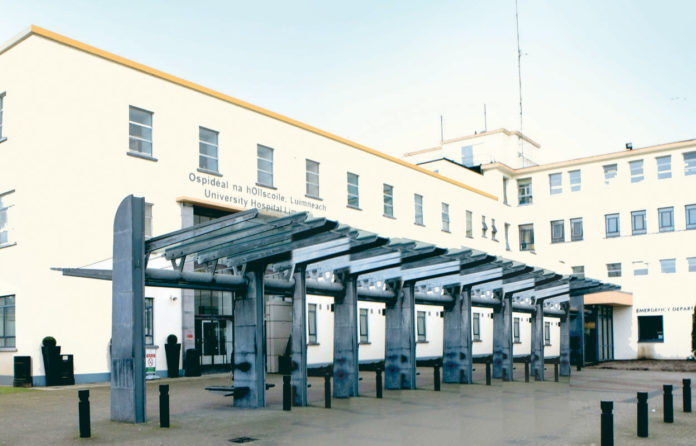
UNIVERSITY Hospital Limerick once again topped the league for the number of patients who had to wait on trolleys for a hospital bed.
The Irish Midwives and Nurses Organisation relayed figures for the month of May, which show that 1,102 patients had to wait in the Emergency Department after being admitted to the hospital.
Cork University Hospital had the second highest figures at 824.
9,015 admitted patients were forced to wait without hospital beds in May 2019 according to the new monthly analysis.
This is a 114 per cent increase on May 2006, when figures began to be recorded. University Hospital Limerick and South Tipperary General Hospital recorded their worst May ever for overcrowding. Among the 9,015 patients were 78 children.
In a statement, UL Hospitals Group said it would like to “sincerely apologise to our patients who have had to wait for an extended period in our Emergency Department (ED) in the month of May and any distress or inconvenience this caused to patients and their loved ones.
“When a patient attends the ED, they are triaged and observations recorded by nursing staff. Patients continue to be cared for by nursing staff whilst awaiting medical/surgical intervention. Once the decision is made to admit a patient, relevant documentation and interventions are completed by nursing staff while awaiting an inpatient bed.
To avoid all patients who require admission waiting in ED, we move two patients on trolleys to the inpatient wards for an available bed following discharges. This allows us to provide additional comfort, privacy screens and locate patients in quieter areas on the wards while they wait for a bed. These patients are included in the overall trolley figures.
On a daily basis, we make every effort to minimise the number of patients who wait on trolleys in the ED and we continue to do so.
We actively encourage people with minor injuries to attend the Injury Units in Ennis, Nenagh and St. John’s hospitals. It is important that we keep the ED for emergencies only and we urge the public to do so. Injury Units treat broken bones, dislocations sprains strains, wounds, scalds and minor burns and save long waiting times.
“We also recommend that people consider attending their GP or the out of hours GP service. Their GP can refer them to a Medical Assessment Unit the following day if required.”
The Emergency Department at University Hospital Limerick is one of the busiest in the country and the numbers presenting continues to increase year on year.
Attendances to the end of December 2018 were 71,823 – an increase of 6.2 per cent on 2017.
“Overcrowding and understaffing mean patients take longer to recover. That means worse care, higher costs, and greater risk of infection. Investment in beds and safe staffing is key to resolving this ongoing crisis.”


